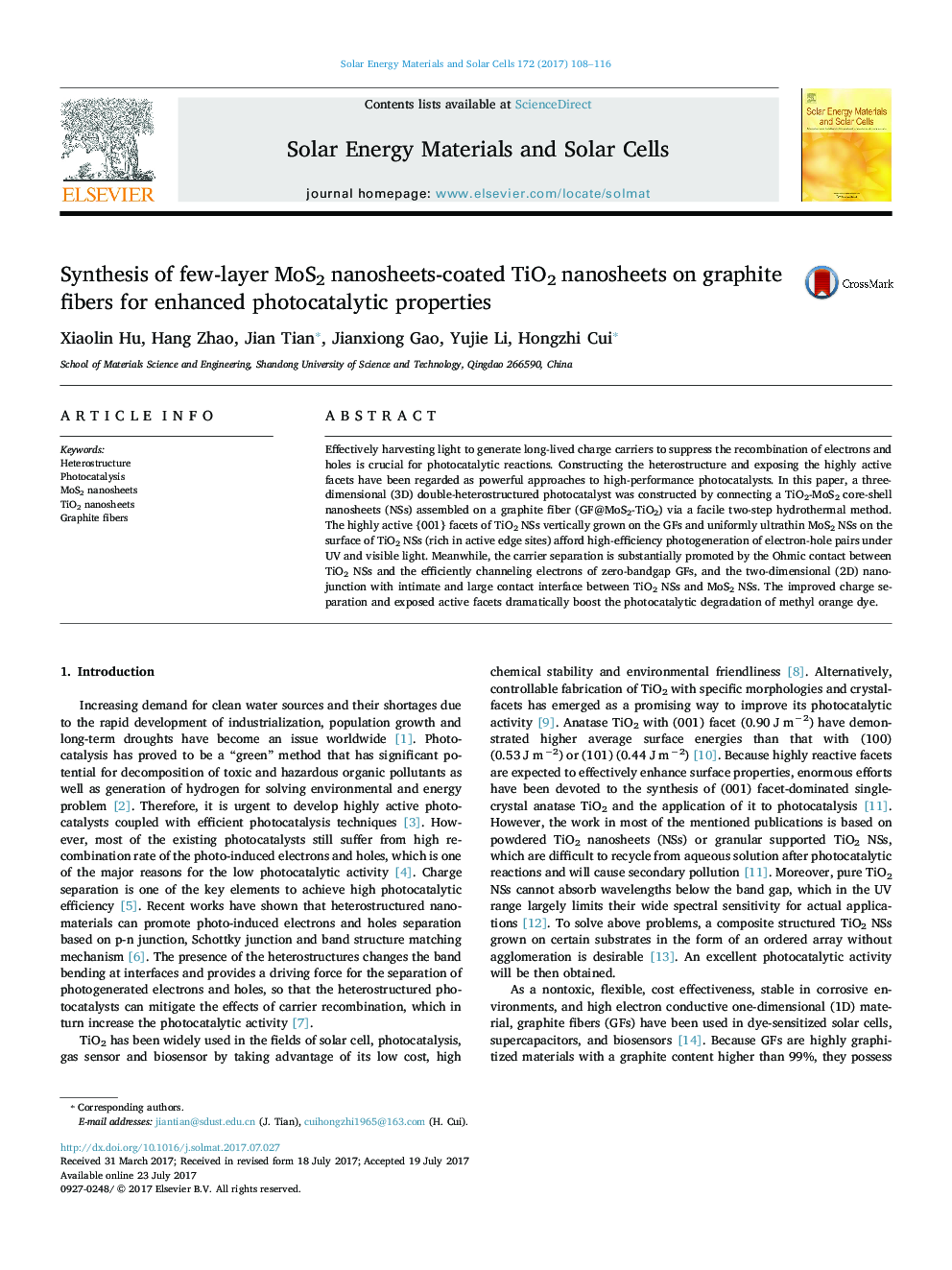| Article ID | Journal | Published Year | Pages | File Type |
|---|---|---|---|---|
| 6456885 | Solar Energy Materials and Solar Cells | 2017 | 9 Pages |
â¢Utilize UV and visible light in photocatalysis for organic contaminants removal.â¢Ohmic contact between TiO2 nanosheets and zero-bandgap graphite fibers.â¢2D nanojuction between TiO2 nanosheets and MoS2 nanosheets.â¢A 3D nanostructure (GF@MoS2-TiO2 composite) is designed.
Effectively harvesting light to generate long-lived charge carriers to suppress the recombination of electrons and holes is crucial for photocatalytic reactions. Constructing the heterostructure and exposing the highly active facets have been regarded as powerful approaches to high-performance photocatalysts. In this paper, a three-dimensional (3D) double-heterostructured photocatalyst was constructed by connecting a TiO2-MoS2 core-shell nanosheets (NSs) assembled on a graphite fiber (GF@MoS2-TiO2) via a facile two-step hydrothermal method. The highly active {001} facets of TiO2 NSs vertically grown on the GFs and uniformly ultrathin MoS2 NSs on the surface of TiO2 NSs (rich in active edge sites) afford high-efficiency photogeneration of electron-hole pairs under UV and visible light. Meanwhile, the carrier separation is substantially promoted by the Ohmic contact between TiO2 NSs and the efficiently channeling electrons of zero-bandgap GFs, and the two-dimensional (2D) nanojunction with intimate and large contact interface between TiO2 NSs and MoS2 NSs. The improved charge separation and exposed active facets dramatically boost the photocatalytic degradation of methyl orange dye.
Graphical abstractDownload high-res image (207KB)Download full-size image
